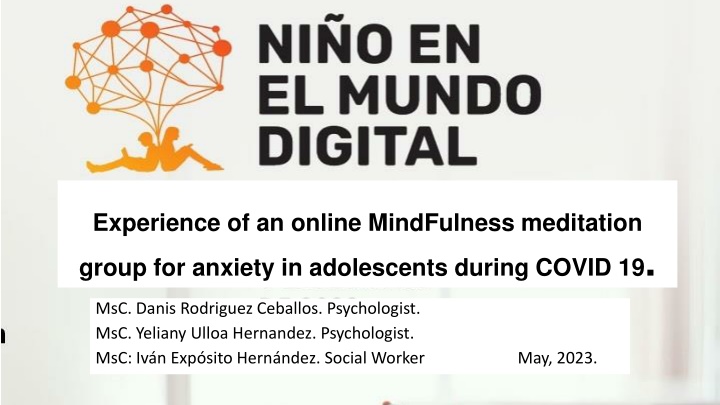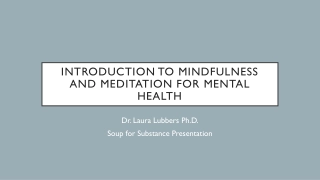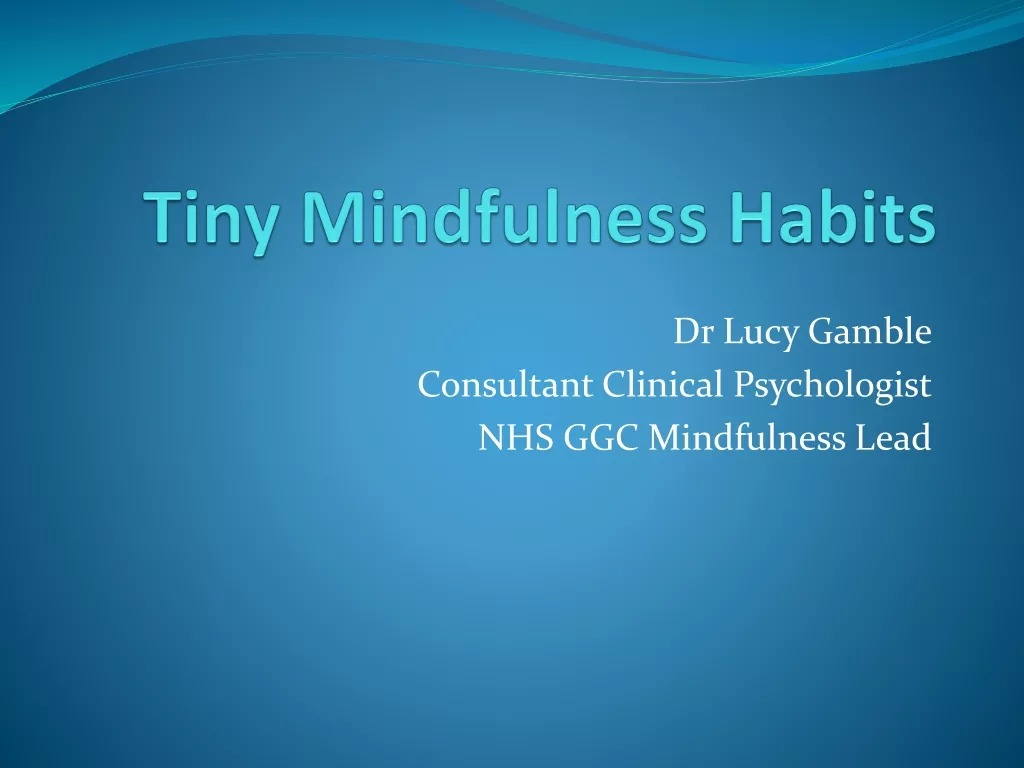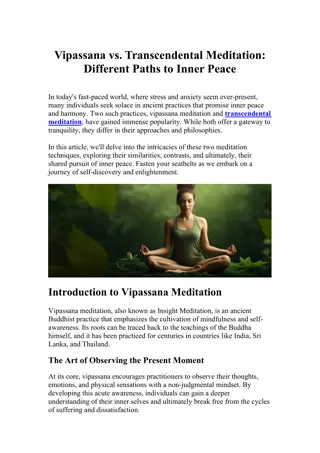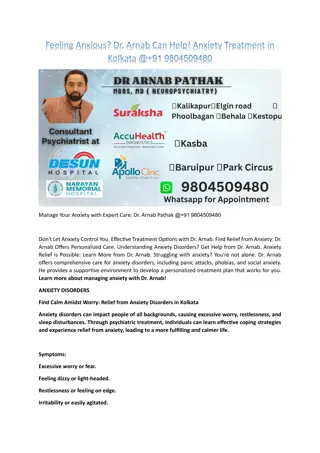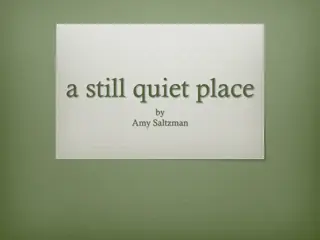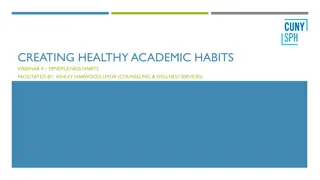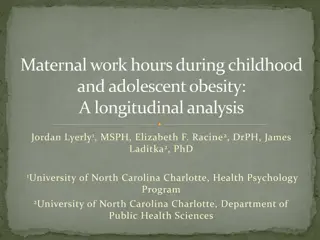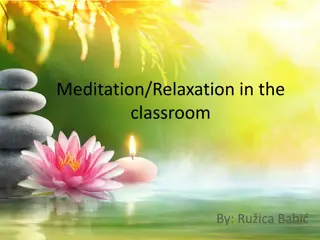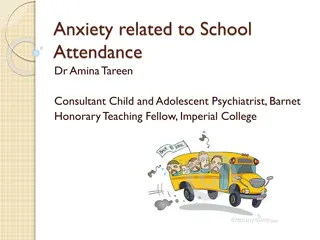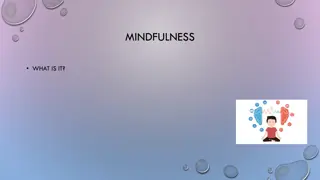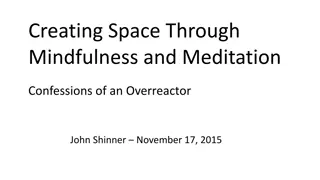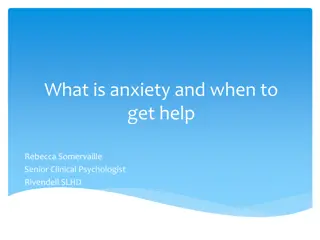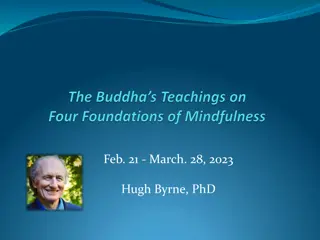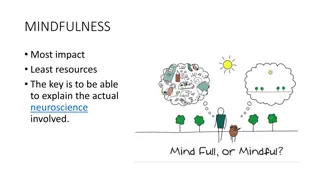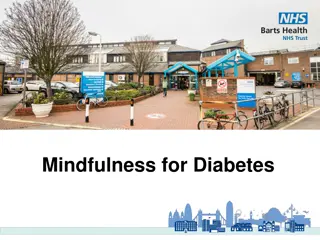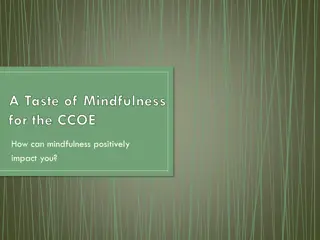Online Mindfulness Meditation for Adolescent Anxiety Amid COVID-19
Amid the COVID-19 pandemic, Cuban psychologists and social workers implemented online Mindfulness meditation groups to address anxiety in adolescents. The research explores the effectiveness of this intervention in treating generalized anxiety disorder symptoms. Through virtual therapy sessions, teenagers aged 13-17 in Ciego de Avila province received guidance and practiced Mindfulness techniques to alleviate stress and improve mental well-being during confinement. The study outlines the methodology, sample selection, and rationale for using group psychological interventions.
Download Presentation

Please find below an Image/Link to download the presentation.
The content on the website is provided AS IS for your information and personal use only. It may not be sold, licensed, or shared on other websites without obtaining consent from the author.If you encounter any issues during the download, it is possible that the publisher has removed the file from their server.
You are allowed to download the files provided on this website for personal or commercial use, subject to the condition that they are used lawfully. All files are the property of their respective owners.
The content on the website is provided AS IS for your information and personal use only. It may not be sold, licensed, or shared on other websites without obtaining consent from the author.
E N D
Presentation Transcript
Experience of an online MindFulness meditation group for anxiety in adolescents during COVID 19. MsC. Danis Rodriguez Ceballos. Psychologist. MsC. Yeliany Ulloa Hernandez. Psychologist. MsC: Iv n Exp sito Hern ndez. Social Worker May, 2023.
Introduction: An epidemic of such magnitude as the one caused by the COVID 19 disease, forced to reconsider the scenarios of doing within Psychology itself. The confinement and stopping of the usual social activities of Cuban adolescents, caused the appearance of anxiety in this age group. The need to provide treatment from physical distancing conditions the development of online Mindfulness meditation groups, an experience that constitutes the relevance of this research.
Demand for intervention: Generalized anxiety in 16 adolescents between 13 and 17 years old. Proceed diagnosis through techniques: Clinical Interview, IDARE, Inventory of stressful situations. ID: TAG of the adolescent. Definition: Exaggerated, unrealistic adolescent anxiety about life in general Symptom duration: At least six months
Demand for intervention: Manifest symptoms in: fear of leaving home, personal and social relationships, the future and criticism for bodily changes after confinement. Manifest personological tendencies: Perfectionism, Hypersensitivity to criticism, Dependence Somatic symptoms: Dizziness, abdominal pain, fainting, tremors, chest tightness
Objective: With the aim of promoting a treatment for the manifestations of generalized anxiety disorder due to confinement during COVID.19 in 16 adolescents from the Ciego de vila province in Cuba, two groups were created virtually from social networks that, based on the therapist guidance implement the procedures of Mindfulness meditation.
Methods and sample: The resulting experience constitutes the present qualitative investigation of the research-action type supported by the historical-logical, analytical-synthetic methods, modeling among others. Its population was the 16 adolescents from Ciego de Avila diagnosed with the pathology who sought help during confinement in mental health services. As an exclusion criterion, it is assumed that they do not belong to the age range between 13 and 17 years.
Why a group psychological intervention through Mindfulness? Its competence and opportunity in the opinion of some theoretical referents: A general definition of Mindfulness is awareness of the present moment with acceptance (Garc a, 2008). It can be considered as a set of meditation exercises and has been included in different relaxation and stress management training formats (Smith, 2010). Mindfulness has been formulated as a psychological construct (Bishop et al., 2004), or as a process through which a particular state of consciousness is reached, and even as a personality trait (Vallejo, 2018).
Why a group psychological intervention through Mindfulness? Its competence and opportunity in the opinion of some theoretical referents: If we admit that exposure is a key piece in the effectiveness of the treatment of anxiety disorders, the practice of Mindfulness enhances awareness of this process, encouraging the individual to explore in detail the fear they feel, and progressively increase the degree of equanimity in the acceptance of his experience. (Rodriguez, 2019) The Mindfulness experience seeks a gradual change in the person's relationship with their own anxiety, evolving their attitude from fearful avoidance to friendly tolerance. This refocusing favors the adaptive aspects of anxiety and attenuates or eliminates the non-adaptive ones. (Rodriguez, 2021)
Intervention procedure: Full attention therapy or Mindfulness. Cognitive Behavioral Therapy. III Generation. Frequency: 2 weekly group sessions. Duration: 50 minutes (therapeutic hour) Extension: 16 weeks, according to the therapeutic contract. Medium: Two WhatsApp groups and their ZOOM platform of 8 members and the therapist.
System of exercises and resources: Week 1: Mindfulness on Breathing and mindfulness on sounds and silence. Week 2: Mindfulness of bodily sensations. Week 3: Full attention to smell and sight. Week 4: Full attention on repetitive thoughts. Week 5: Full attention to personal positive emotions. Week 6: Full attention to emotions as a result of interaction with others.
System of exercises and resources: Week 7: Full attention to bodily sensations as a result of fears. Week 8: Full attention to bodily sensations as a result of fears. Week 9: Full attention to emotions as a result of family demands. Week 10: Full attention to emotions as a result of the teaching demands. Week 11: Full attention to emotions as a result of the teaching demands.
System of exercises and resources: Week 12: Full attention to sensations and emotions in the face of criticism. Week 13: Full attention to emotions before future goals. Week 14: Full attention to emotions before future goals. Week 15: Full attention to emotions as a result of interaction with emotionally important people. Week 16: Mindfulness in everyday life.
Conclusions: By way of conclusions, it can be reflected that at the end of the therapeutic procedure, a reduction of the initial symptoms was achieved in 100% of those involved, when they were subjected to re-evaluation. Development of personal skills that show resilience: confronting fears, greater social activity, self-knowledge, self-assessment, self-control and the ability to adapt to new circumstances. It is important in this regard to clarify that in none of the cases was medication necessary at any time.
